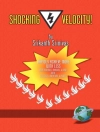Drugs and the Neuroscience of Behavior presents an introduction to the rapidly advancing field of psychopharmacology by examining how drug actions in the brain affect psychological processes. Author Adam Prus provides historical background to give readers an appreciation for the development of drug treatments and neuroscience over time, covering major topics in psychopharmacology including new drugs and recent trends in drug use. Empirically supported pedagogical features offer students the opportunity to reflect on what they read to ensure understanding before progressing to new content. The
Third Edition includes a new chapter on depressants and discussions of major topics such as the opioid epidemic, the risks associated with vaping, and MDMA-assisted psychotherapy for PTSD.
Included with this title:
The password-protected Instructor Resource Site (formally known as SAGE Edge) offers access to all text-specific resources, including a test bank and editable, chapter-specific Power Point® slides.
Cuprins
Preface
Acknowledgments
About the Author
Chapter 1. Introduction to Psychopharmacology
Psychopharmacology
Why Read a Book on Psychopharmacology?
What Is a Drug?
Psychoactive Drugs Are Described by Manner of Use
Generic, Brand, Chemical, and Street Names for Drugs
Drug Effects Correspond With Doses
Pharmacodynamics, Pharmacokinetics, and Pharmacogenetics
Objective and Subjective Effects of Psychoactive Drugs
Study Designs and the Assessment of Psychoactive Drugs
Validity and the Interpretation of Study Findings
Ethical Considerations in Research
From Actions to Effects: Therapeutic Drug Development
Chapter Summary
Key Terms
Chapter 2. The Nervous System
Cells in the Nervous System
The Nervous System
Cerebral Blood Flow and Cerebrospinal Fluid
Genes and the Physiological Processes of Cells
From Actions to Effects: Advances in Therapeutic Use of CRISPR Genetic Technology
Chapter Summary
Key Terms
Chapter 3. Neurotransmission
Electrical Events Within a Neuron and the Release of Neurotransmitters
Electrical Potentials Along Axons
Propagation of Action Potentials Down Axons
Neurotransmitters: Signalling Molecules for Neuronal Communication
Neurotransmitters and Receptors
Types of Neurotransmitters
Other Types of Chemical Transmission in the Nervous System
From Actions to Effects: Probiotics and Mental Health
Chapter Summary
Key Terms
Chapter 4. Properties of Drugs
Pharmacokinetic Properties of Drugs
Pharmacodynamic Properties of Drugs
Psychoactive Drugs and Receptors
Adaptations to Chronic Drug Use
From Actions to Effects: Environmental Neurotoxicology
Chapter Summary
Key Terms
Chapter 5. Drugs of Abuse
Regulatory Agencies and Drug Classification
Clinical Definitions and the Diagnosis of Drug Addiction
Theoretical Models and the Features of Drug Addiction
Drugs of Abuse and Reward Circuitry
Chronic Use of Abused Substances and Changes to Learning and Memory Systems
Neurobiology and the Stages of Drug Addiction
Mortality and Drug Addiction
Psychological and Pharmacological Therapies for Treating Drug Addiction
From Actions to Effects: Food Addiction
Chapter Summary
Key Terms
A Final Note About Drug Addiction
Chapter 6. Psychostimulants
Psychostimulants: Herbal Products, Prescription Drugs, and Substances of Abuse
Pharmacokinetics of Psychostimulants
Psychostimulants and Monoamine Neurotransmitters
Pharmacological Effects of Psychostimulants
From Actions to Effects: Psychostimulants as Cognitive Enhancers and Treatments for ADHD
Chapter Summary
Key Terms
Chapter 7. Nicotine and Caffeine
Nicotine and Tobacco
History of Tobacco
Pharmacokinetic Properties of Tobacco
Nicotine and Nervous System Functioning
Nicotine’s Pharmacological Effects
Environmental, Genetic, and Receptor Differences Between Light and Heavy Tobacco Users
From Actions to Effects: Why People Smoke and How They Quit
Caffeine
Caffeine Absorption, Duration, and Interaction With Other Psychoactive Drugs
Caffeine: Antagonist for Adenosine Receptors
Caffeine: Mild Psychostimulant Effects
Tolerance and Withdrawal During Sustained Caffeine Use
From Actions to Effects: Caffeine Habit?
Chapter Summary
Key Terms
Chapter 8. Depressants
Types of Depressant Substances
Depressants and GABA Neurotransmission
Barbiturates
Benzodiazepines
Z-Drugs
Gamma-Hydroxybutyrate (GHB)
Inhalants
From Actions to Effects: Stimulus Properties of GHB and Toluene
Chapter Summary
Key Terms
Chapter 9. Alcohol
Alcohol: The Most Commonly Used Depressant Substance
Alcohol Production Through Fermentation and Distillation
History of Alcohol
Pharmacokinetic Factors and Alcohol’s Effects
Alcohol and Interactions With Other Drugs
Alcohol and Central Nervous System Functioning
Pharmacological Effects of Alcohol
Treating Alcohol Addiction
From Actions to Effects: Hangover
Chapter Summary
Key Terms
Chapter 10. Opioids
Opioids: Natural and Synthetic
History of Opioid Use
Pharmacokinetic Properties and Opioid Abuse
Opioid Drugs and the Endogenous Opioid System
Opioid Drugs Are Classified by Receptor Actions
Opioids and Reward, Pain, and Stress Systems
Opioid Rewarding and Analgesic Effects
From Actions to Effects: Pharmacological Approaches for Treating Opioid Addiction
Chapter Summary
Key Terms
Chapter 11. Cannabinoids
Historical Use of Cannabis
Methods of Cannabis Preparation and Use
Cannabinoid Compounds and the Endocannabinoid System
Physiological Effects of Cannabinoids
Behavioral and Cognitive Effects of Cannabinoids
Subjective Effects of Cannabinoids
Cannabis Use Disorder
Health Risks of Cannabis
From Actions to Effects: Medical Use of Cannabinoids
Chapter Summary
Key Terms
Chapter 12. Psychedelic Drugs
Hallucinogens
Mixed Stimulant–Psychedelic Drugs
Dissociative Anesthetics
Other Psychedelic Drugs
From Actions to Effects: Synesthesia
Chapter Summary
Key Terms
Chapter 13. Treatments for Depression and Bipolar Disorder
Mental Disorders
Depression
Antidepressant Drugs
Limitations in Antidepressant Drug Effectiveness and Development
Pharmacogenetic Factors in Antidepressant Treatment
Combination Drug Strategies for Treating Depression
Combining Psychotherapy and Pharmacotherapy for Treating Depression
Antidepressant Drugs and Monoamine Neurotransmitter Systems
Bipolar Disorder
Mood Stabilizers, Anticonvulsants, Antipsychotics, and Antidepressants for Bipolar Disorder
From Actions to Effects: Psychedelic Drugs for Treating Depression
Chapter Summary
Key Terms
Chapter 14. Treatments for Anxiety Disorders
Anxiety Disorders
Structures Involved in Fear and Anxiety
Anxious Feelings, the Amygdala, and the Sympathetic Nervous System
Stress and the HPA Axis
Anxiolytic Drugs for the Treatment of Anxiety
Antidepressant Drugs for the Treatment of Anxiety Disorders
MDMA Treatment for Post-Traumatic Stress Disorder
From Actions to Effects: How Do Antidepressant Drugs Reduce Anxiety?
Chapter Summary
Key Terms
Chapter 15. Antipsychotic Drugs
Schizophrenia
Schizophrenia’s Complex Neurobiological Profile
A Brief History of Schizophrenia and Its Treatment
Neurotransmission Hypotheses for Schizophrenia
Typical and Atypical Antipsychotic Drugs
Antipsychotic Drugs and Autism
From Actions to Effects: Antipsychotic Drug Actions and Neurotransmission in Schizophrenia
Chapter Summary
Key Terms
Glossary
References
Author Index
Subject Index
Despre autor
Dr. Adam Prus is a professor and head of psychology at Northern Michigan University in Marquette, Michigan. He earned his Ph D in psychology from Virginia Commonwealth University and a master’s degree in psychology from Western Michigan University. While in graduate school, Prus also worked as a research technician at a large pharmaceutical company, where he screened central nervous system drugs using various biological assays. After earning his Ph D, Dr. Prus investigated experimental antipsychotic drugs as a postdoctoral fellow in the Psychopharmacology Division of the Department of Psychiatry at Vanderbilt University. Dr. Prus has published numerous original studies on psychoactive drugs, including studies funded by the National Institute on Mental Illness and private foundations. At NMU, he directs the Neuropsychopharmacology Laboratory, where he enjoys mentoring undergraduate and graduate students and spends too much time fixing lab equipment. When he is not teaching, training students, writing books or conducting research, Dr. Prus spends time with his wife and two children, and together they enjoy outdoor activities in Michigan’s Upper Peninsula, where NMU is located.












